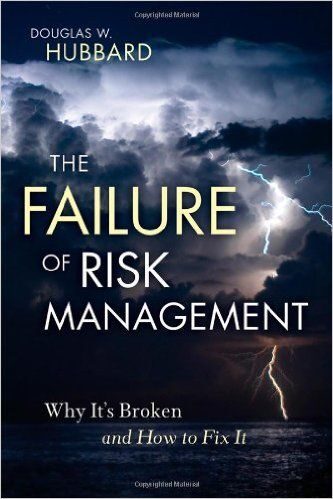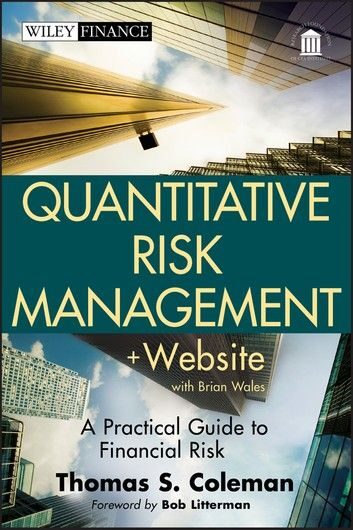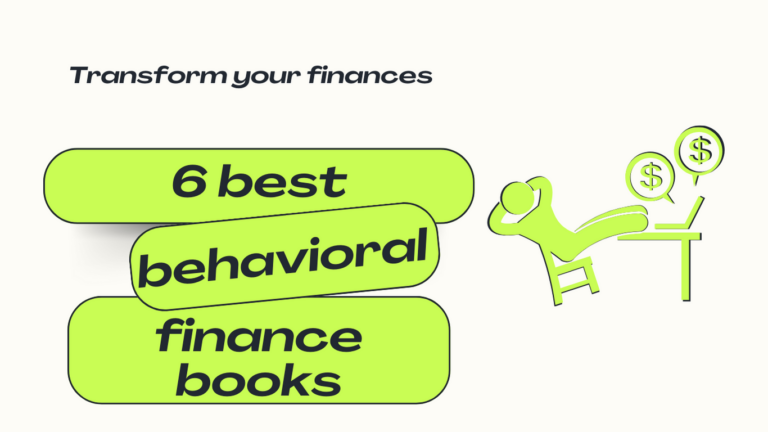In today’s ever-evolving financial and corporate era, risk management strategies have become the key to mitigating risks and making informed decisions. Risk management books are an efficient way to develop a deep understanding of core risk principles and strategies to adopt to mitigate them. Before moving ahead, let us understand the concept of risk management.
Table of Contents
What is risk management?
Risk management is the process of identifying, analyzing, and managing threats to an organization’s capital and profits. These threats might be financial, legal, or strategic. Unforseen financial circumstances, legal obligations, poor strategic management, mishaps, and natural disasters can result in risk and thereby require risk management strategies. In this article, we will review five of the best risk management books to help you shine in your professional careers while making the most of your available resources.
Top 5 risk management books
1. Against the Gods: The Remarkable Story of Risk by Peter L. Bernstein

Book review and key takeaways:
This is an excellent book on risk management, especially for students studying the stock market. The author shares the idea that, after all, life has risks, but if risks are managed well, one could reduce their consequences at least to some degree. It contains a brief history of risk, beginning with the origin of the present-day number system, the creation of probability concepts, and finally its evolution into today’s risk management strategies.
Apart from students, it is also a good read for finance professionals, as it helps to trace uncertainty from the beginning of history and link up to modern-day financial engineering. This book is basically a biography of ‘risk’, tracing its origins and its subsequent manifestations.
It is like a time machine that makes you travel back hundreds of years in time, all the way from 1200 until the 1990s, and along these timelines are the interesting stories of the evolution of gambling (the very essence of risk-taking), time, numbers, geometry, probability, statistics, the Petersburg Paradox, risk-takers, utility, insurance, derivatives, game theory, etc. It includes the brilliant tales of mathematicians, scientists, inventors, technologists, philosophers, and all the great thinkers whose remarkable contributions revealed how to put the future at the service of the present in order to make forward-looking choices.
Also, you may read 6 Best Financial Modeling Software – Important Read!!
2. The Failure of Risk Management: Why It’s Broken and How to Fix It by Douglas W. Hubbard

Book review and key takeaways:
Hubbard argues that many approaches to risk management are equivalent to astrology and that, at worst, risk management systems can expose an organization to more risk than they mitigate. According to him, risk matrices have spread from company to company like a dangerous virus with a long incubation period and have even been codified into some laws, and now we’re all trapped using these faulty tools.
He explains why, in his opinion, the most popular risk analysis methods are ineffective and may, in fact, cause more harm than they prevent. The popular methods are based on what he calls “scoring systems,” assigning a score to a risk using a poorly defined scale such as 1 to 5, or “low,” “medium,” and “high.” He gives reasonable arguments against these scoring systems and shows how they lead to bad decisions. He does admit that it often doesn’t matter, though, because very few organizations actually track decisions made as a result of risk analyses to determine whether the analysis was flawed.
Hubbard recommends using quantitative risk analysis methods, mainly based on Monte Carlo modeling. The book begins with a survey of the current state of risk management in many different fields. It is painfully obvious that, particularly in IT and project management, we are ignoring basic knowledge from fields such as actuarial science.
A good executive-level summary of some of the challenges the risk management and risk quantification profession faces is provided in the book. It is a useful discussion of risk management with the applications of judgment and decision-making research. The calibration tests are a nice benefit as well.
3. World-Class Risk Management by Norman Marks

Book review and key takeaways:
The book considers a holistic approach as to why it’s imperative that risk management be a central competency throughout the enterprise rather than how to run a risk management department. The author is quite familiar with the standards, quotes from them at length, compares them, but also offers his take when he thinks one (or all) of the available standards is lacking.
It is an excellent book if you’re interested in improving your company’s risk management. It is definitely targeted more at enterprises than medium or small businesses. Norman covers all key risk management topics and shares perspectives from his rich set of experiences on each topic. If you are starting to formalize risk management practices in your organization or if your current risk management practices are not delivering business value, you will find some great insights in this book.
The book explains ERM standards and the kinds of controversies they bring to the subject. The author brilliantly describes the weak points of those standards and highlights the good aspects. He constantly references decision-making as a basis for risk management and implies that all risks should be analyzed within specific business processes, like strategic, operational, or tactical planning, as any other.
Also, you may read 6 Best Behavioral Finance Books – Important Must Read!!
4. Financial Risk Management: Applications in Market, Credit, Asset, and Liability Management and Firmwide Risk by Jimmy Skoglund and Wei Chen

Book review and key takeaways:
This book covers a wide range of topics, including different risk sources and modern risk management approaches. At the beginning of each chapter, the authors present a good background review by telling stories about what happened in history. They incorporate their views, which help you understand what caused the troubles in the past and why practitioners and regulators are paying more attention to some specific risk issues.
Instead of showing lengthy documentation of the regulations, the authors use some simple examples that are easy to understand but still mathematically precise. With those examples, not only can you get a better view of the whole picture but also of each single detail. If you also need a floating bar to try to understand some regulations not written in plain language, this book will definitely help you out there.
The book provides expert guidance on the practical usefulness of notions and theories relating to risk management. It offers answers to questions like, What is the convention in the industry? Why do people prefer one model to another? What is the proper use case for a model? What kind of improvements can people still make?
5.Quantitative Risk Management: A Practical Guide to Risk Management by Thomas S. Coleman

Book review and key takeaways:
Thomas Coleman comes from the banking world, and so a lot of the topics in this book are tailored to banks, and the examples are also largely from the financial world. Coleman’s book does an excellent job of highlighting the importance of the qualitative aspects of risk management. This is in contrast to most other books that focus solely on quantitative issues.
In the book, the author quotes, “The ultimate goal for risk management is to build a robust yet flexible organization and set of processes. We need to recognize that quantitative risk measurement tools often fail to capture just those unanticipated events that pose the most risk to the organization. The art of risk management is in building a culture and organization that can respond to and withstand these unanticipated events.”
He emphasizes throughout that the management of risk is not a function designed to minimize risk. Although risk usually refers to the downside of random outcomes, as Coleman puts it, risk management is about taking advantage of opportunities: controlling the downside and exploiting the upside.
Some interesting ideas delivered through the book include risk management being too important a responsibility for managers to delegate and the only outcome that matters being the future cash flow and profits of the firm. The book offers a very interesting discussion on probability and intuition, including a nice set of examples on how intuition might fool you in measuring probabilities. It discusses frequency-type and bayesian-type probabilities. Coleman shows the importance of soft managerial skills in risk management, discussing the importance of managing people, processes, data, etc.
Also, you may read 3 Ways of Using Derivatives To Hedge and Manage Risks
Conclusion
Risk management is basically understanding the risks taken. The right way to analyze risks is by using appropriate tools of probability. But the common methods taught are often flawed. They are vague and qualitative and ignore the concepts of common-mode risks. Risk management books, on the other hand, provide readers with the true essence of core risk principles and, therefore, are an efficient way to mitigate anticipated risks. They provide us with the tools and strategies needed to make wise decisions across a range of industries, leading to fruitful future growth.
Frequently Asked Questions
What are the best risk-management strategies?
Thorough risk assessment, investment diversification, goal-setting, stop-loss orders, market trend monitoring, and having a backup plan are all examples of good risk management strategies. A comprehensive risk management framework also includes maintaining a disciplined approach, appropriate asset allocation, and regular strategy reviews and adjustments.
Why is risk management important?
Organizations need to use risk management to help them recognize, evaluate, and reduce any threats to their goals. By offering an organized framework to manage uncertainties, it lessens the possibility of unfavorable outcomes, safeguards assets, and increases resilience all around, all of which improve decision-making.
Is hedging a risk management strategy?
Yes, hedging is a risk management strategy that reduces the impact of possible losses by taking positions that are offset by one another. In the financial markets, it is frequently employed as a safeguard against unfavorable price changes. Individuals and companies can reduce the risks brought on by changes in interest rates, prices, or currencies by using hedging strategies.










